Special Report
Countries With the Largest Nuclear Stockpiles
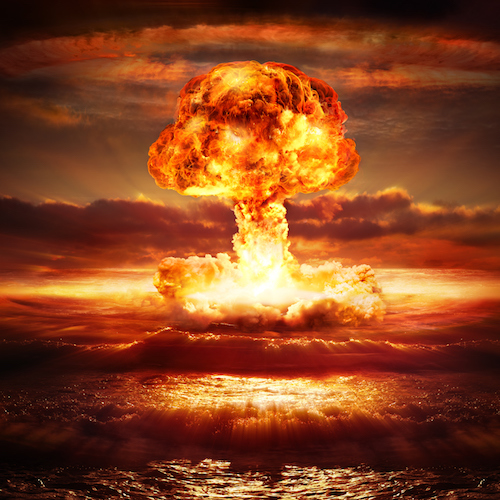
Published:
Last Updated:

Tensions between North Korea and the United States were raised Wednesday as the communist nation threatened preemptive military strikes against the U.S. after President Donald Trump promised to unleash “fire and fury” on North Korea if it continues its aggression.
North Korea’s state-run media threatened a missile strike on the U.S. Pacific territory of Guam and said the communist nation would “turn the US mainland into the theater of a nuclear war” if there was any indication of an impending American attack.
North Korea’s bellicose message follows Trump’s inflammatory remarks at his Bedminster, New Jersey, resort on Tuesday. “North Korea best not make any more threats to the United States,’’ he said. “They will be met with fire, fury and frankly power, the likes of which this world has never seen before.’’
North Korea’s nuclear stockpile remains, even at the most generous of estimates, infinitesimal compared to the world’s other nuclear powers. If the United States were to engage Pyongyang in nuclear combat, it would have one of the world’s largest arsenals at its disposal.
Click here to see how many weapons the world’s nuclear powers have.
Click here to see our detailed findings and methodology.

9. North Korea
> Nuclear stockpile: 10-20 warheads
> Year of first nuclear test: 2006
> Military spending: N/A
> GDP: N/A
North Korea first tested a nuclear weapon in October 2006, approximately three years after the country withdrew from the Non-Proliferation Treaty, an international agreement with 190 member countries whose objective is to prevent the spread of nuclear weapons worldwide. North Korea conducted its fifth and most recent nuclear weapons test in September 2016, with analysis of the blast site showing increased energy yields from the bombs. In July, North Korea was believed to have successfully tested a long-range intercontinental ballistic missile, a weapon which some experts say would be able to reach Alaska. While it is estimated that North Korea has 10 to 20 nuclear warheads, it is unknown whether the warheads are compact enough to be delivered through such a long-range ballistic missile. Japan, the United States, the United Nations, and the European Union have imposed sanctions against North Korea in response to its weapons tests.
[in-text-ad]

8. Israel
> Nuclear stockpile: 80 warheads
> Year of first nuclear test: N/A
> Military spending: $17.98 billion
> GDP: $299.42 billion
Israel maintains a policy of deliberate ambiguity regarding its possession of nuclear arms, neither confirming nor denying the existence of its nuclear inventory or having conducted a weapons test. Despite the country’s opacity, SIPRI estimates Israel has approximately 80 nuclear weapons. Along with India, Pakistan, and North Korea, Israel is one of four countries with nuclear capabilities that has not signed the Non-Proliferation Treaty. Israel maintains the treaty is unconducive to its national security interests. At the same time, it has fought extensively to prevent other Middle Eastern nations from developing nuclear programs. Israel remains the only nuclear power in the region.

7. India
> Nuclear stockpile: 120-130 warheads
> Year of first nuclear test: 1974
> Military spending: $55.92 billion
> GDP: $2.09 trillion
Since the two countries became independent states in 1947, India and Pakistan have had a tense relationship that has often escalated into violent conflict, including three major wars and a nuclear arms race that continues today. India conducted its first nuclear weapons test in 1974 and is believed to have between 120 and 130 weapons today. While India has declared a policy of no first use — that its nuclear arsenal is solely a deterrent and will only be used in response to an attack of comparable force — Pakistan has adopted a first strike policy. According to SIPRI, India is currently expanding its nuclear arsenal and associated infrastructure.
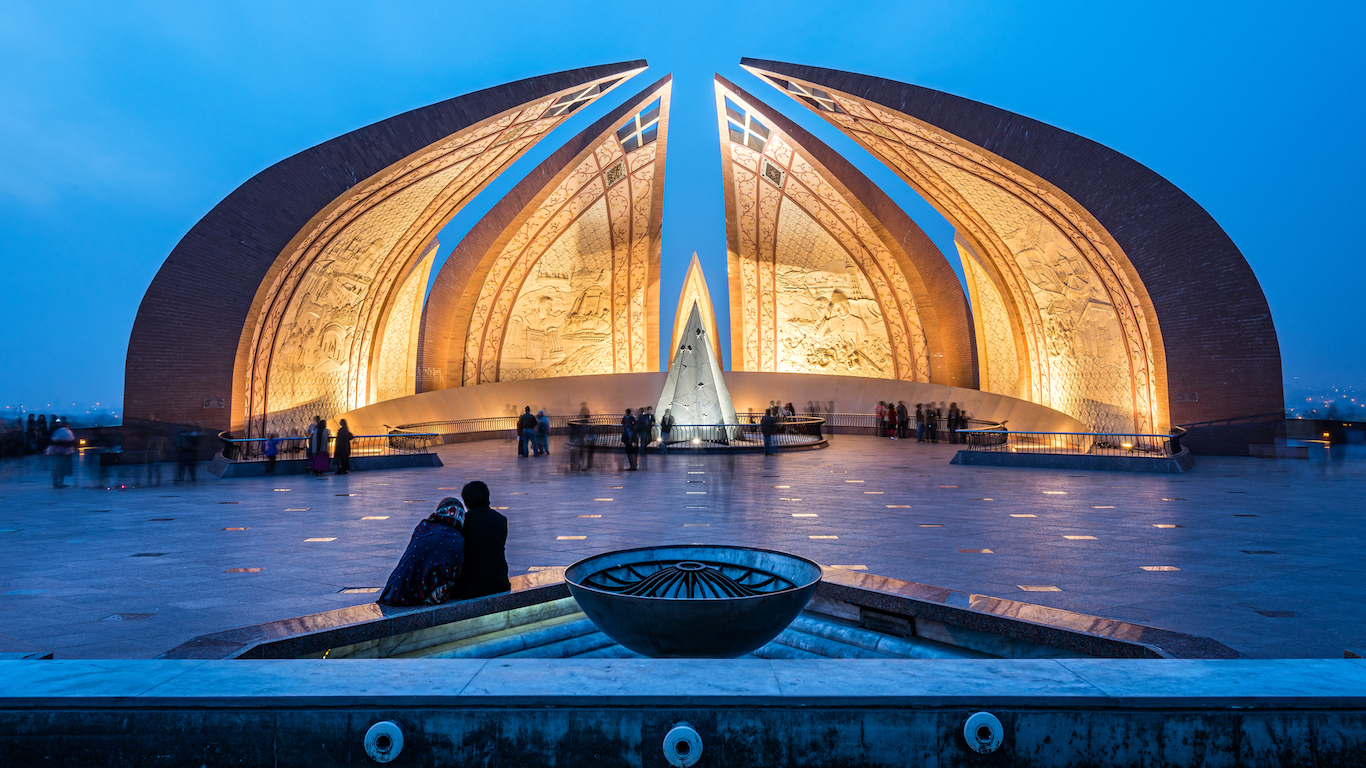
6. Pakistan
> Nuclear stockpile: 130-140 warheads
> Year of first nuclear test: 1998
> Military spending: $10.06 billion
> GDP: $271.05 billion
Pakistan has been involved in military conflict with India since the two countries became independent states in 1947. The discord has resulted in three large-scale wars and a nuclear arms race that continues today. Pakistan conducted its first nuclear weapons test in 1998 and is believed to have a nuclear stockpile of 130 to 140 weapons today. While India has adopted a no first use doctrine and intends to only deploy nuclear weapons in retaliation to a nuclear attack, Pakistan has not. The country’s weapons are designed to have a first strike capacity against non-nuclear forces. Pakistan’s arsenal includes a number of nuclear-capable short-range missiles that analysts believe are meant for small-scale conflict against conventional forces.
[in-text-ad]
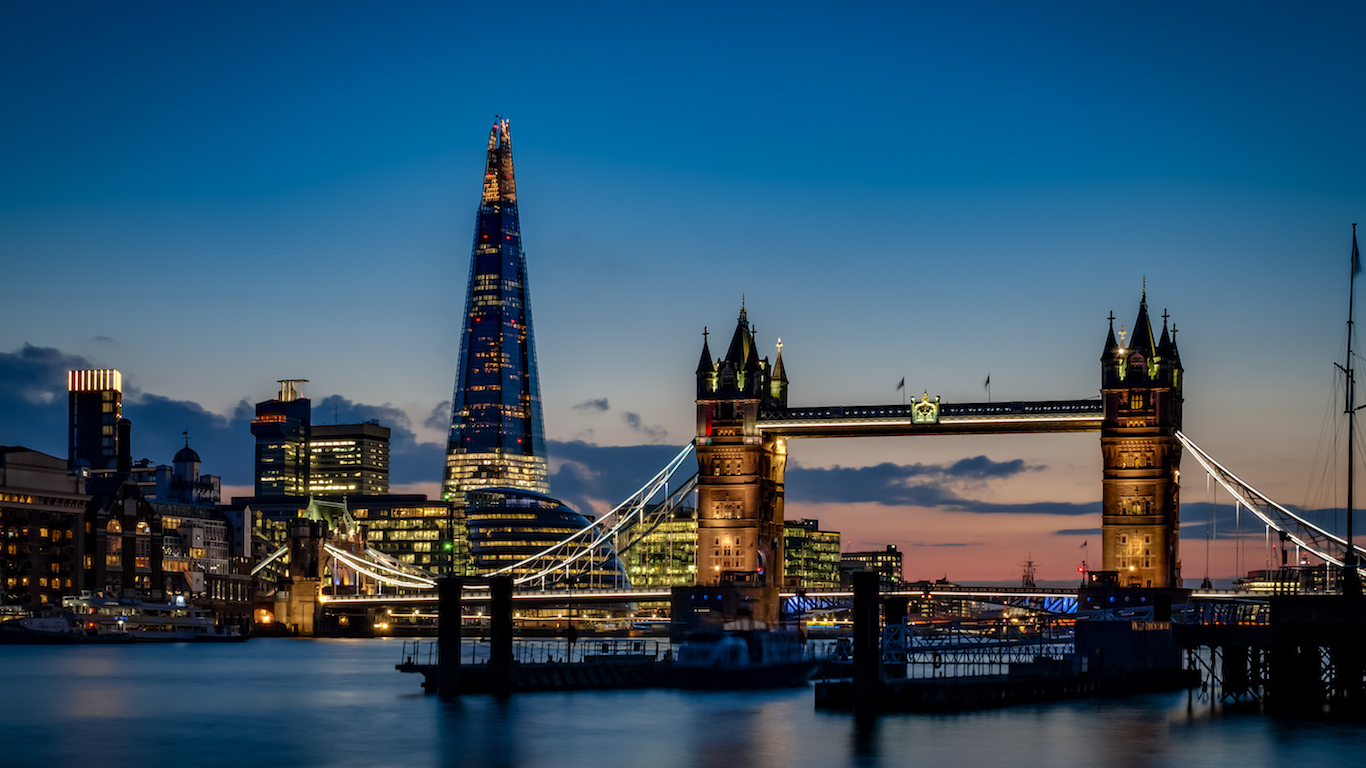
5. United Kingdom
> Nuclear stockpile: 215 warheads
> Year of first nuclear test: 1952
> Military spending: $48.25 billion
> GDP: $2.86 trillion
Britain first entertained the idea of a nuclear weapon in 1945, and in 1952 became the third country to conduct a nuclear weapons test. After establishing a scientific partnership with the United States through the US-UK Mutual Defence Agreement a few years later, Britain went on to develop one of the largest nuclear stockpiles in the world. Today, the United Kingdom is one of many countries reducing the size of its nuclear arsenal under the provisions of the Non-Proliferation Treaty. While the U.K. has a total of approximately 215 nuclear weapons — 120 operational warheads and an estimated 95 in storage — the country will downsize its arsenal to no more than 180 weapons by the mid 2020s. The country will, however, maintain its nuclear deterrent program — a rotating patrol of four nuclear-capable ballistic missile submarines — indefinitely.
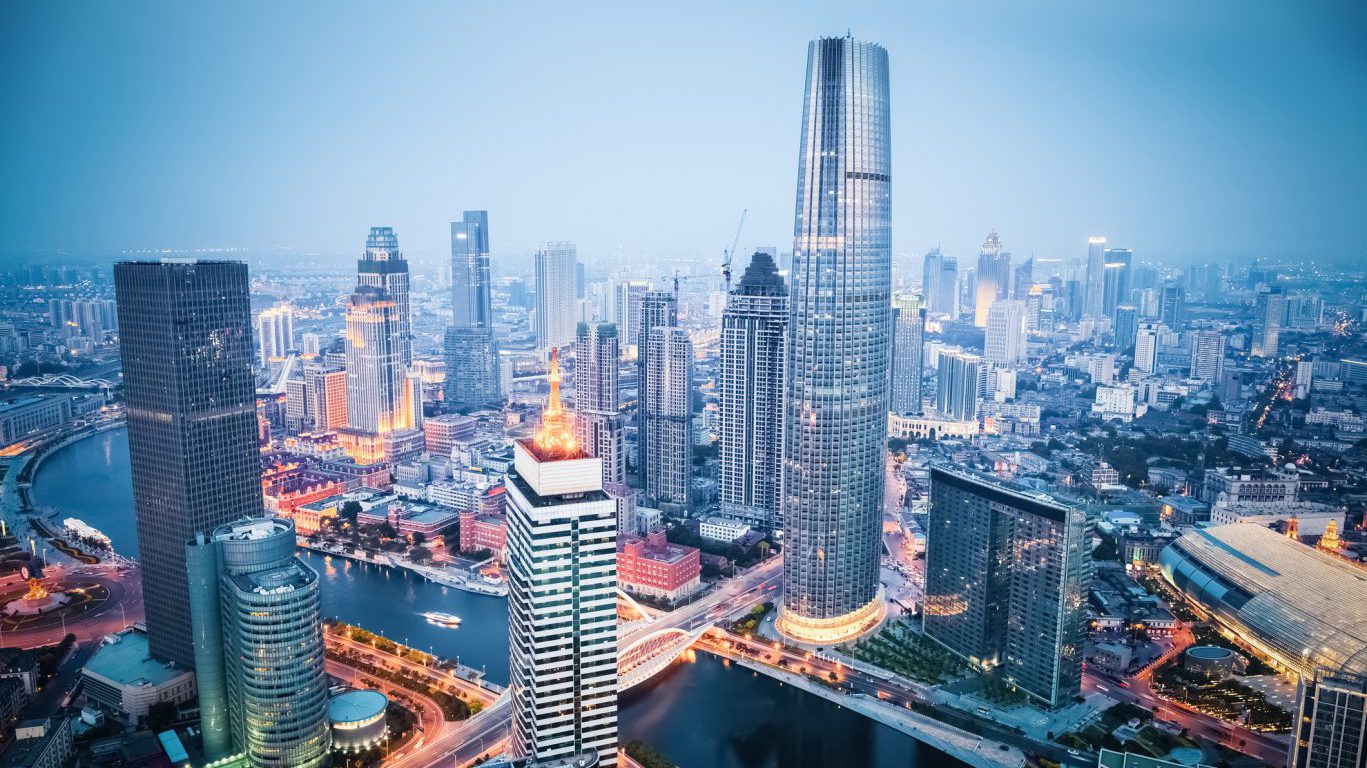
4. China
> Nuclear stockpile: 270 warheads
> Year of first nuclear test: 1964
> Military spending: $215.18 billion
> GDP: $11.06 trillion
China conducted its first nuclear weapons test in 1964 and is today believed to have an arsenal of approximately 270 warheads. Unlike other nuclear weapon states recognized by the Non-Proliferation Treaty, China is currently modernizing and increasing the size of its nuclear stockpile. According to some analysts, the size of China’s nuclear arsenal may double by the mid-2020s. The weapons expansion is a shift in posture for China, which has historically had one of the least aggressive nuclear policies. While China has not explicitly stated the intentions behind its weapons expansion, the country has recently emphasized its commitment to minimum deterrence and a no first use policy in a 2011 defense white paper.
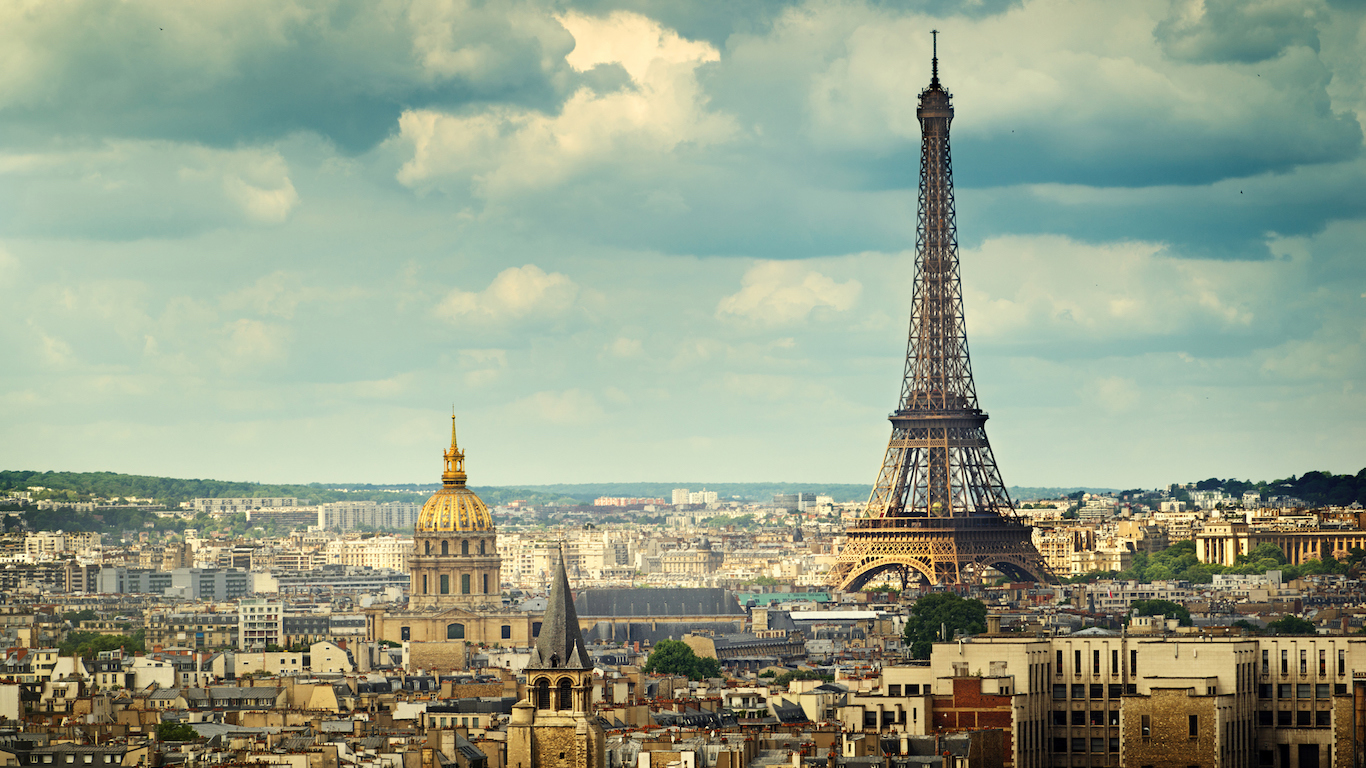
3. France
> Nuclear stockpile: 300 warheads
> Year of first nuclear test: 1960
> Military spending: $55.75 billion
> GDP: $2.42 trillion
In 1960, France became the fourth country in history to test a nuclear weapon, and today it has a stockpile of approximately 300 warheads, the largest arsenal of any country other than the United States and Russia. The weapons were initially developed in the 1950s and 1960s as a means to reduce France’s reliance on NATO and defend against a potential attack from the Soviet Union. Since the late 1980s, however, France has been involved in a global process of disarmament that continues today. The country dismantled its nuclear test site in the South Pacific by 1998 and has eliminated all land-based weapons from its nuclear arsenal.
[in-text-ad]

2. United States
> Nuclear stockpile: 6,800 warheads
> Year of first nuclear test: 1945
> Military spending: $611.19 billion
> GDP: $18.04 trillion
The United States was the first country to manufacture nuclear weapons. While U.S. intelligence predicted that the Soviet Union would not develop a nuclear weapon until 1953, America was taken by surprise when the Soviets detonated a nuclear bomb in August 1949. The event fueled the Cold War and sparked an arms race between the two countries. At its peak in 1967, the United States had amassed 31,255 active warheads. Since then, however, the U.S. has led a process of global disarmament and has dismantled the majority of its weapons. Today, the U.S. has approximately 4,000 active warheads with another 2,800 retired warheads awaiting dismantlement. The United States is the only country to have ever used a nuclear weapon in combat.
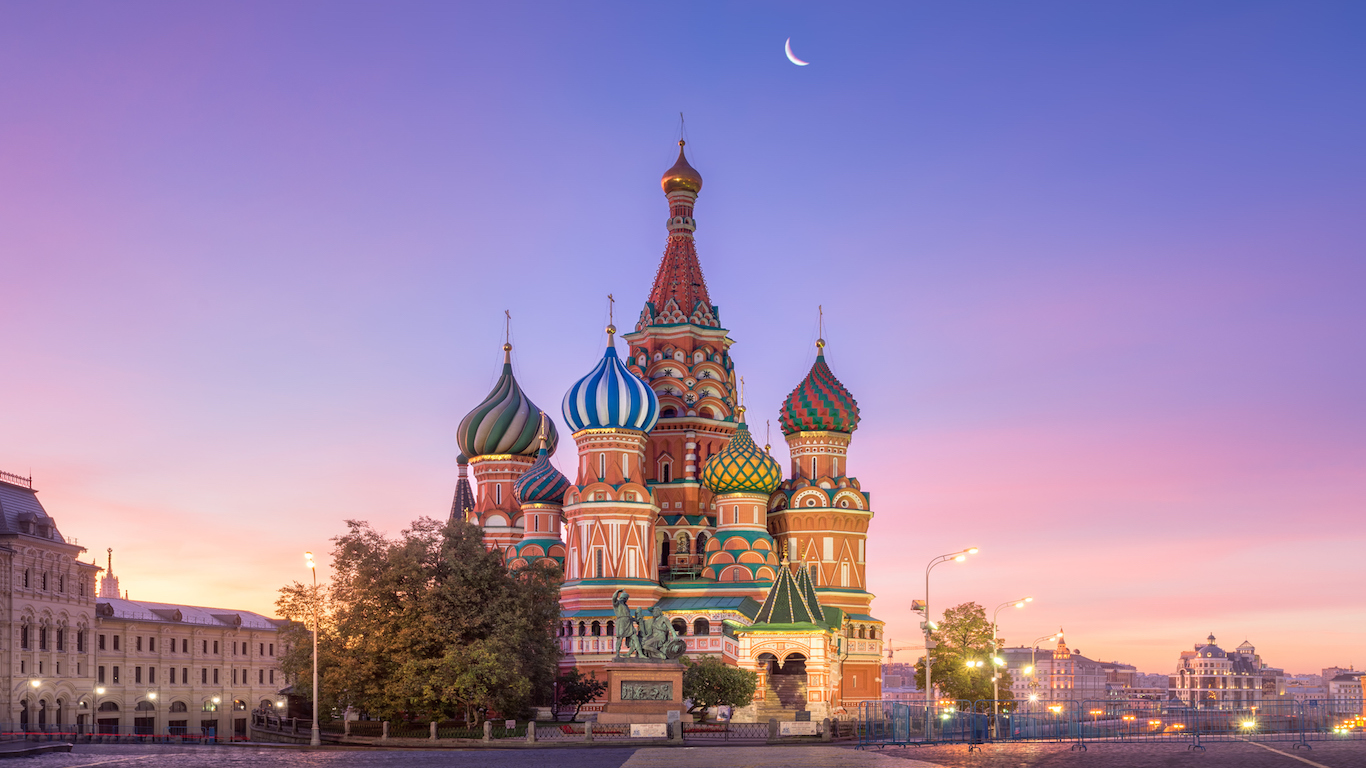
1. Russia
> Nuclear stockpile: 7,000 warheads
> Year of first nuclear test: 1949
> Military spending: $69.25 billion
> GDP: $1.37 trillion
The Soviet Union shocked the world when it successfully detonated a nuclear bomb in August 1949, four years earlier than U.S. intelligence had predicted. The nuclear test fueled the Cold War and ignited an arms race between the two countries. By 1986, the Soviet Union had an estimated 45,000 warheads stockpiled. By the time the Soviet Union dissolved in 1991, Soviet nuclear weapons were distributed among several of the new republics, including Kazakhstan and Ukraine, but were eventually consolidated in Russia by 1996. Since then, Russia has been involved in a global process of disarmament. SIPRI estimates the country has approximately 4,300 active warheads today with another 2,700 retired warheads awaiting dismantlement.
Detailed Findings and Methodology
North Korea’s threat against Guam, ceded by Spain to the U.S. after the Spanish-American War in 1898, came in response to the U.S. flying two B-1B bombers from Guam over the Korean peninsula on Monday. A report in North Korea’s state-run news service KCNA said a strike on Guam, which is just over 2,000 miles south of North Korea, would be aimed at U.S. military bases on the U.S. territory.
In a separate report, KCNA said North Korea was looking beyond Guam and would hit the U.S. mainland with a preemptive attack using nuclear weapons, should there be any sign the U.S. planned to strike North Korea first.
North Korea ranked ninth in nuclear weapons inventory with 10 to 20 nuclear warheads, according to data provided by the Stockholm International Peace Research Institute. The country first tested a nuclear weapon in October 2006.
Using data provided by the Stockholm International Peace Research Institute, or SIPRI, 24/7 Wall St. reviewed the nine countries with the largest nuclear stockpiles. Most countries do not publicize the exact figures of their nuclear weapons inventories, so some SIPRI figures are estimates based on expert analysis.
Credit card companies are at war. The biggest issuers are handing out free rewards and benefits to win the best customers.
It’s possible to find cards paying unlimited 1.5%, 2%, and even more today. That’s free money for qualified borrowers, and the type of thing that would be crazy to pass up. Those rewards can add up to thousands of dollars every year in free money, and include other benefits as well.
We’ve assembled some of the best credit cards for users today. Don’t miss these offers because they won’t be this good forever.
Flywheel Publishing has partnered with CardRatings for our coverage of credit card products. Flywheel Publishing and CardRatings may receive a commission from card issuers.
Thank you for reading! Have some feedback for us?
Contact the 24/7 Wall St. editorial team.